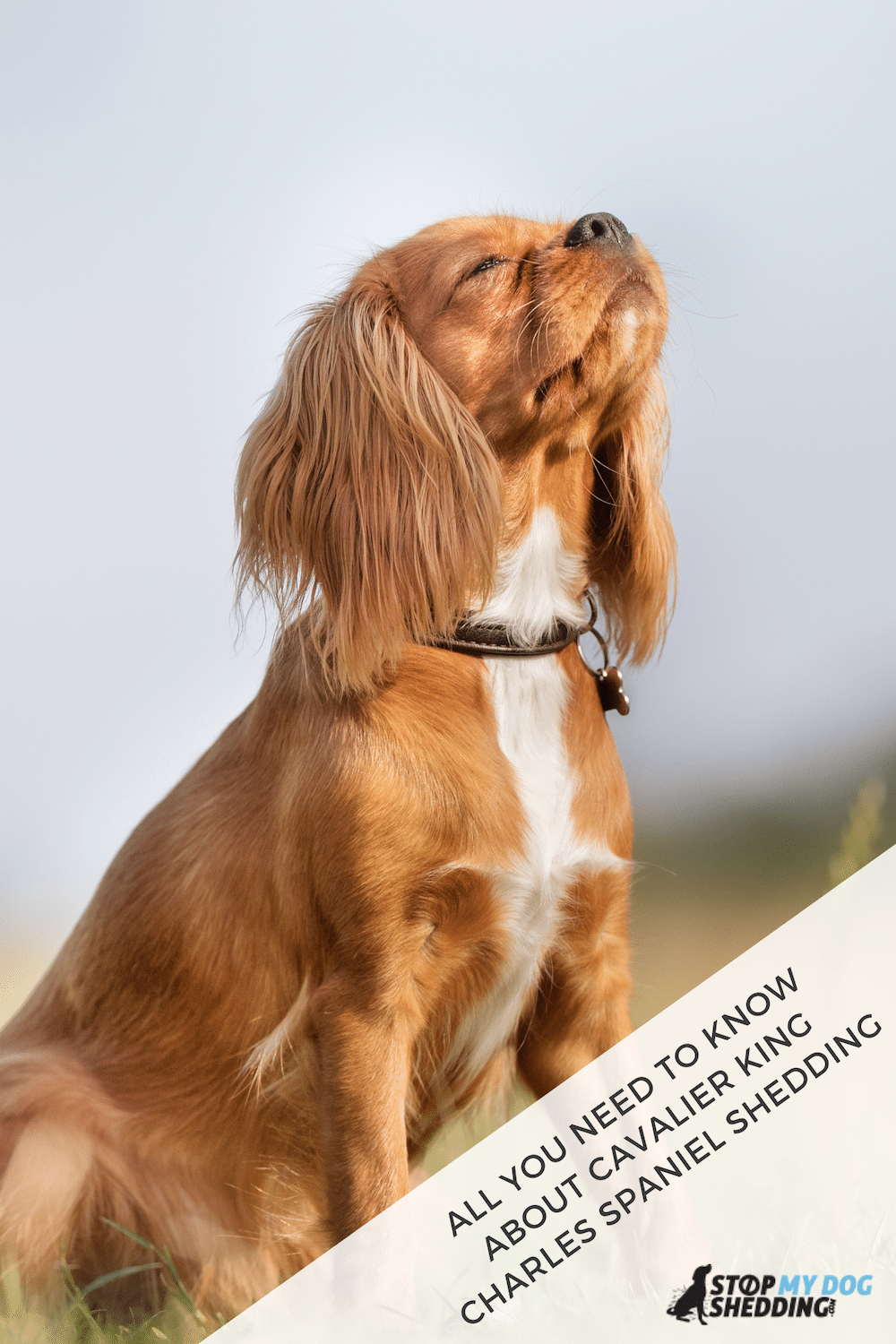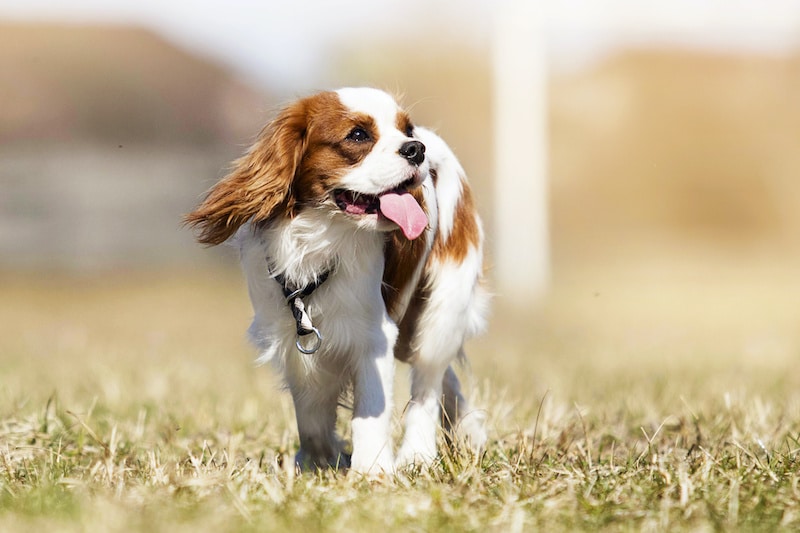Cavalier King Charles Spaniels are small dogs that are known for their gentle, affectionate nature, beautiful puppy dog eyes and adorable expression. They’re not just a pretty face though, Cavaliers make great family companions that can adapt to virtually any lifestyle. Whether you’re looking for a lapdog, active hiking buddy, or capable hunting partner.
How much do they shed?
The Cavalier King Charles Spaniel has silky, medium-length hair that sheds moderately year-round. So they’re not hypoallergenic, nor are they the lowest shedding breed in dogdom. But on the plus side, their coat isn’t very high maintenance compared to some toy breeds.
Let’s take a closer look at the Cavalier, how much shedding they do, and what they’re like to groom, so that you have a better idea of what to expect.
About Cavalier King Charles Spaniels
Cavalier King Charles Spaniels are small toy spaniels, which is quite a unique combination because, on one hand, spaniels are generally known as sporty, active dogs that make great hunting partners, like the Welsh Springer Spaniel for example. Whereas toy breeds are often associated with small, irresistibly cute, lapdogs like the Toy Poodle for example.
So they really do have the best of both worlds. They’re incredibly cute and don’t mind spending time relaxing on your lap, while also being great company outdoors.
What’s their heritage?
According to the American Kennel Club, the Cavalier began as a Toy Spaniel, which was around in the 17th century and became a favorite of British aristocrats in the 19th century. Basically, they were the prized lapdogs of British royalty.
Late in that same century, however, Toy Spaniels were crossed with Pugs and Japanese Chins and, as a result, became known as English Toy Spaniels. Eventually, somewhere in the 1920’s, they were “revived” to the old style which brought about the Cavalier King Charles Spaniel as we know it. And today, they’re one of the most popular breeds in the United States.
It’s not hard to see why either.
They make adorable companions that suit just about any lifestyle. Whether you live in an apartment or on a farm, and whether you’re active or prefer a more relaxed lifestyle.
Another standout feature of the Cavalier is their beautiful coat. It’s silky and medium in length with feathering around the ears, tail, legs and chest. And the breed standard recognizes four distinct color combinations – Blenheim, ruby, black and tan, or tricolor.
In the next section, we’ll take a closer look at how much they shed and some of the ways you can manage the shedding, to keep your home as hair-free as possible.
Cavalier Shedding
Cavalier King Charles Spaniels are a moderate shedding breed.
What this means is that you typically won’t notice constant hair on your floors and furniture, as you would with a breed like the Cardigan Welsh Corgi for example, but they’re not as low shedding as dogs like the Bichon Frise either.
So if you’re looking for a super low shedding breed, or one that is the least likely to upset dog allergies, this may not be the most suitable breed.
That said, there are a few things worth mentioning here.
First, virtually all dogs shed at least some hair. This is a perfectly normal and natural process whereby the dog is shedding their old hair so that it can be replaced by new hairs. So even though it may be annoying, it’s just something dogs do.
Second, Cavaliers don’t have a thick, woolly undercoat like some dogs do, which means they’re easier to groom and don’t “blow coat” periodically. As such, the shedding tends to be more manageable and evenly spread throughout the year.
Third, there are some really effective ways to minimize the shedding.
And one of the main ways to do that is to ensure his diet is optimal, which your veterinarian should be able to help you with. This can make a big difference to your dog’s overall health and wellbeing, and can help improve their skin and coat, so it’s worth choosing an optimal dog food.
The other main way to reduce shedding is through proper grooming. So let’s discuss what Cavaliers are like to groom, and how this can help limit how much fur he drops.
Grooming Your Cavalier
The Cavalier’s coat is about average in terms of maintenance.
On one hand, he doesn’t require multiple time consuming brushing sessions each week, or visits to a professional groomer, as some toy breeds do.
But on the other hand, you typically need to brush a Cavalier at least once per week in order to keep his coat mat and tangle free and looking its best. This is mostly because of its silky texture overall length, and feathering around the ears, legs, chest and tail area.
Which brush should you use?
A pin brush or slicker brush is ideal for general brushing as these are designed to gently remove mats, knots and loose hair, while massaging the skin. Whereas a deshedding tool may be worth using once every couple weeks or so to remove more of the dead hair in less time.
Either way, weekly brushing is a really good habit to get into because it not only removes the old hair from your dog’s coat before it falls off, but can help spread the skin oils and improve the condition of his coat overall, which in turn can lead to less shedding.
Another worthwhile exercise is to bath your dog with a good quality dog shampoo on a monthly basis. Provided you use a gentle dog shampoo, and you don’t bath too often, this can be a great way to remove the loose hair and keep his coat in good shape.
And for the ultimate deshedding session, try bathing your Cavalier, followed by blowing the coat dry with a dog hair blower and finally, finish up with a thorough brush. Together, this can remove a significant amount of the loose fur before it has a chance to fill your home.
Bottom Line
Cavalier King Charles Spaniels are nothing short of adorable and make excellent family companions given their affectionate nature and ability to adapt to most lifestyles.
Like most dogs, they do shed, but not very much. Either way, managing the shedding is, for the most part, a matter of ensuring his diet is optimal and establishing a proper grooming routine, which is fairly easy with a Cavalier since they’re not very high maintenance overall.
With all of that being said, sometimes excessive shedding can be caused by things such as fleas, stress, allergies, or any number of health issues. So it may be worth speaking to a qualified veterinarian if you are concerned that the shedding is excessive.

















Hi. I’ve been doing some dog research to find a dog that doesn’t shed and doesn’t bark too much. My heart is desperate to get a Cavalier King Charles Spaniel, but I’m hesitant because of their shedding. Most websites I read say they shed a lot, but your website says it’s manageable. What I cannot handle is having hair on my clothes and hair flying around the house all day long. Is this what I would expect with a Cavalier?
Hi,
All dogs shed to some extent, but the Cavalier King Charles Spaniel probably isn’t ideal if you’re looking for a super low shedding, or hypoallergenic, breed. You will likely notice some hair on your clothes and around the home.
However, as I explain in detail in this shedding FAQ, how much hair you notice depends on a variety of factors, so it can still be very manageable.
The main factor is the breed, and as mentioned, Cavalier’s are generally considered moderate shedders. However, shedding can vary among dogs of the same breed, so it may be worth checking with your local breeder before deciding, to see what their experience has been.
Either way, there are some great ways to manage shedding, and the main ones are proper diet and grooming. Even then, you will likely notice more hair floating around than if you adopted a lower shedding dog, but it is possible to keep it down to a level that isn’t very noticeable, and the guide I just linked to should prove useful.
Hope this helps and if you do decide to adopt a Cavalier, we’d love to hear how it went! 🙂
What are your thoughts on a Cavalier mixed with a Bichon? I am looking at rescues and came across a pup that is a cavachon. We do have some minimal dog allergies but I’m wondering if the mix will help to reduce the shedding. We’ve had a yorkipoo and a schnoodle which have been great for us but I am trying to keep my options open since we are looking at rescues.
Hi Kristin,
It’s hard to know how much a mixed breed will shed because it depends on various factors, such as the breed of the parents and what parent the dog’s coat mostly resembles.
That said, Cavaliers shed moderately, and the Bichon Frise is a very low shedder, so it’s possible that a mix of Cavalier and Bichon could result in a lower shedding breed.
However, keep in mind that the Bichon’s coat can be fairly high maintenance, so that’s something you may also want to factor in before deciding.
Thanks for commenting, and all the best. 🙂
Thank you Sarah! I appreciate the info! ?